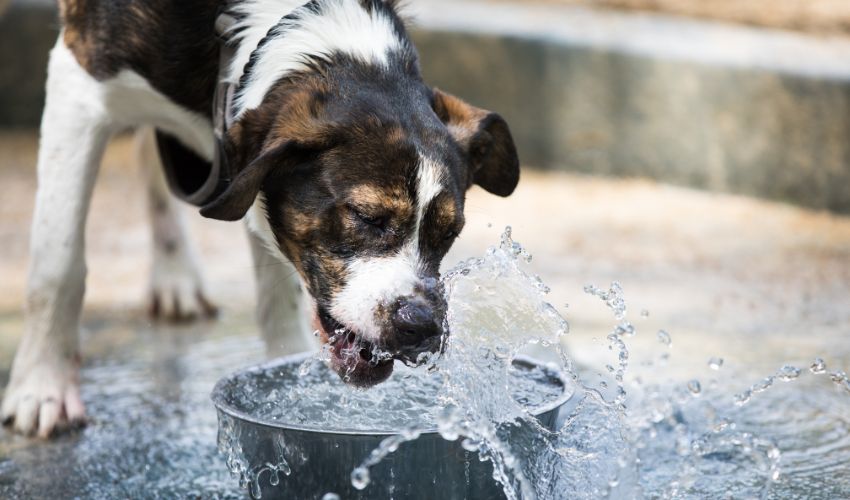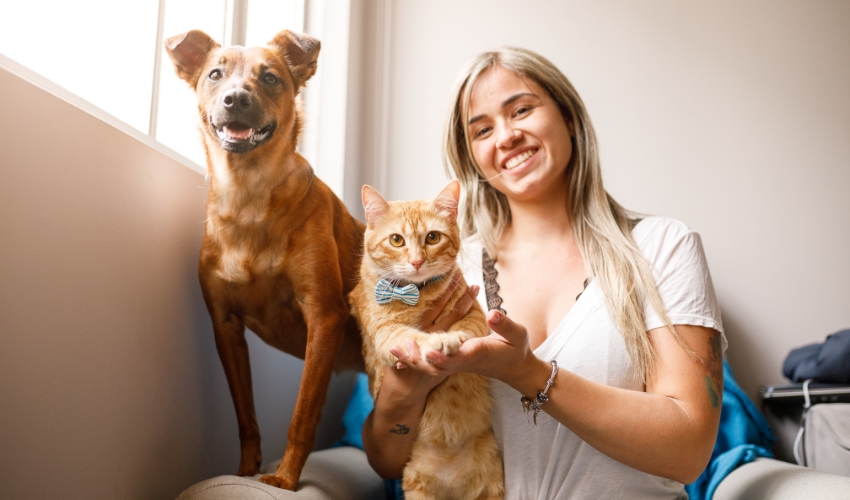The Three Stages of Canine Distemper
 Canine Distemper is a viral disease that affects dogs. Usually, the unvaccinated adult dogs and puppies are the most at risk for contracting this disease. It’s highly contagious and can easily spread from one dog to another in enclosed spaces.
Canine Distemper is a viral disease that affects dogs. Usually, the unvaccinated adult dogs and puppies are the most at risk for contracting this disease. It’s highly contagious and can easily spread from one dog to another in enclosed spaces.
Each time an infected dog coughs or sneezes, the virus is released in the air in the form of aerosol droplets. Canines within the vicinity can catch the virus if they inhale the contaminated particles. There are also other ways dogs can contract the Distemper disease; if they come into contact with contaminated urine, vomit, feces, nasal secretions, objects, and surfaces.
The Canine Distemper Virus has an incubation period of about 1 to 2 weeks, sometimes 4 to 6 weeks. However, it is common that symptoms may appear as early as 6 days after contracting the virus. For others it can take over 21 days. Canine Distemper symptoms are divided into three stages, we’re going to go through them one by one below.
First stage


Just like people, every dog is unique and can experience symptoms differently. The high fever in the first stage of infection generally doesn’t last long and subsides fairly quickly. Once it does, the next stage of the disease will usually begin.
Second Stage


It is very important for dogs to receive proper care and supportive treatment during this stage. Since there is no cure for Canine Distemper, love, comfort and specific instructions from your veterinarian are a dogs best options. To aide in their recovery, veteriarians will typically administer IV fluids to prevent dehydration, anti-emetics to help with vomiting, antidiarrheals to control diarrhea, and antibiotics to help the body fight pathogens and prevent secondary infections.
Another way to support the gastrointestinal system of dogs that have Canine Distemper is to provide them with immune-boosting vitamins and supplements, like probiotics, vitamin C, and B-complex.
Third Stage


When the disease reaches this stage, veterinarians will most likely prescribe the infected pup an anti-seizure medication to manage the spontaneous fits. However, in cases where the seizure episodes become too severe for anti-seizure medications to handle, they may resort to using steroids. It’s not likely, though, since dogs with Distemper already have a compromised immune system and steroids work by suppressing immune function. That can leave the sick pooch even more vulnerable to secondary infections.
What to Do When Your Dog Starts Seizing


- Carefully remove objects near your dog that may hurt or injure their head.
- Don’t try to move your dog. You can accidentally get bitten during the episode.
- If it’s safe for you to do so, lightly apply pressure on your dog’s eyeballs for about 60 seconds.
- Refrain from yelling or creating loud noises.
- Don’t try to hold your dog’s mouth.
- Don’t try to put medication in your dog’s mouth while they’re seizing.
- Get emergency help if your dog’s seizure lasts longer than five minutes.
- After the seizure episode, bring your dog to the animal hospital immediately.














